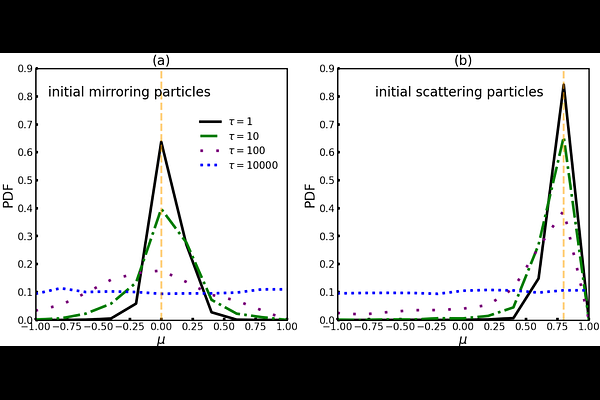Studying the diffusion mechanism of cosmic-ray particles

Studying the diffusion mechanism of cosmic-ray particles
Yawen Xiao, Jianfu Zhang, Siyao Xu
AbstractMore and more observations have indicated the existence of slow diffusion phenomena in astrophysical environments, such as around the supernova remnants and pulsar $\gamma$-ray halos, where the diffusion coefficient of cosmic rays (CRs) near the source region is significantly smaller than that far away from the source region. The inhomogeneous diffusion indicates the existence of multiple diffusion mechanisms.Comparing the CR mirror diffusion with the scattering one, we aim to explore their diffusion characteristics in different magnetohydrodynamic (MHD) turbulence regimes and understand the effect of different MHD modes on mirror and scattering diffusion. We perform numerical simulations with the test particle method. Within the global frame of reference, we first measure parallel and perpendicular CR diffusion and then determine the mean free path of CRs with varying energies.Our main results demonstrate that: (1) CRs experience a transition from superdiffusion to normal diffusion; (2) mirror diffusion is more important than scattering diffusion in confining CRs; (3) CR diffusion strongly depends on the properties of MHD turbulence; and (4) magnetosonic and Alfv\'en modes dominate the parallel and perpendicular diffusion of CR particles, respectively. The diffusion of CRs is a complex problem of mixing the mirror diffusion and scattering diffusion. The property of turbulent magnetic fields influences CR diffusion. The CR slow diffusion due to the presence of magnetic mirrors in turbulence has important implications for explaining observations near a CR source.